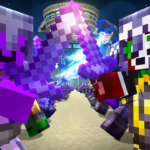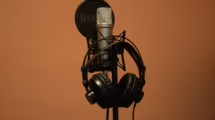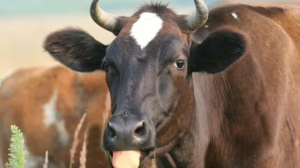Exploring Gheg: The Heartbeat of Northern Albanian Dialects
Introduction
Albania, a country nestled in the southeastern corner of Europe, boasts a rich tapestry of cultures and languages reflective of its complex history. Among the diverse linguistic landscape, the Gheg dialect stands out as a vibrant and significant variant of the Albanian language. This article aims to explore the Gheg dialect, its characteristics, history, and cultural significance, while shedding light on its role as the heartbeat of northern Albanian dialects.
What is Gheg?
Gheg is one of the two primary dialects of the Albanian language, with the other being Tosk. Traditionally, Gheg is spoken in the northern regions of Albania and parts of Kosovo and Montenegro. It is classified as a dialect rather than a distinct language, yet it features distinct phonological, grammatical, and lexical characteristics that differentiate it from Tosk.
Geographic Distribution
The Gheg dialect is predominantly spoken in the northern provinces of Albania, such as Shkodër, Kukës, and the mountainous regions of Dibër and Lezhë. Its influence extends beyond the borders of Albania, particularly in Kosovo, where many Albanian-speaking communities uphold the Gheg variant. The dialect’s variation can often be attributed to the geographical diversity and the rich history of migration and settlement patterns in these regions.
Historical Context
The roots of the Gheg dialect can be traced back to the earliest recorded forms of the Albanian language. Historical accounts and some linguistic studies suggest that Gheg has retained many archaic features lost in Tosk. The dialect has evolved through various phases of history, influenced by Ottoman rule, Italian occupation, and the tumultuous events of the 20th century, including the rise and fall of communist regimes. Such historical factors have contributed to the blending of different linguistic elements, creating the unique variant of Gheg we recognize today.
Gheg in Literature and Tradition
Gheg has also been a medium for oral tradition, folklore, and poetry. The rich oral tradition, particularly in northern Albania, has resulted in a treasure trove of epic narratives and songs, such as the “Lahuta e Malësisë” (The Highland Lute), an epic poem that immortalizes the struggles and resilience of the Albanian people against foreign invasions. Such cultural artifacts not only showcase the beauty of the Gheg dialect but also serve as a repository of history and identity.
Linguistic Characteristics
Phonology
One of the most striking features of the Gheg dialect is its phonological system, which distinguishes it from Tosk. Gheg uses a series of sounds and vocabulary that are not found in Tosk, such as different pronunciations of certain letters and the use of nasal vowels. For instance, the Gheg dialect employs an “e” pronounced as [ɛ] in certain word contexts, which can create confusion for Tosk speakers.
Grammar
The grammatical structure of Gheg also shows notable differences compared to Tosk. Gheg tends to preserve older grammatical forms, such as the use of definite articles that precede nouns, which can vary in Tosk. Additionally, Gheg employs more complex verb forms, particularly in the past tense, allowing for nuances in expression that may be absent in Tosk.
Vocabulary and Dialectal Variations
Gheg vocabulary is enriched by a number of borrowings from Slavic languages, Italian, and Greek due to historical interactions in the region. Various sub-dialects exist within Gheg, influenced by local customs, traditions, and even neighboring languages. For example, the Bari Gheg dialect, spoken mostly in Kosovo, features unique lexicons and pronunciations that differentiate it from other Gheg sub-dialects.
Cultural Significance
The Gheg dialect is more than just a means of communication; it is a symbol of identity and cultural pride for the Albanian people, especially in the northern regions. In times of historical upheaval, Gheg served as a unifying force among communities, reinforcing a sense of belonging and cultural heritage. The dialect carries with it the weight of tradition, evoking the tales of ancestors and the struggles of a nation striving for self-determination.
The Role of Gheg in Modern Media
In recent years, there has been a resurgence of interest in the Gheg dialect, spurred on by modern media, literature, and social platforms. Growing awareness and pride in regional dialects have led to a revival of Gheg in mainstream Albanian literature, music, and film. Artists such as the musician Flaka Krelani and writer A. Krenar have popularized Gheg, showcasing its beauty and distinctive character to a wider audience.
Cultural Preservation Efforts
In addition to creative endeavors, cultural preservation efforts targeting the Gheg dialect have gained momentum. Organizations dedicated to the study and promotion of the Albanian language have launched initiatives aimed at maintaining Gheg’s linguistic and cultural legacy. Educational programs in local schools, workshops, and publications are helping to ensure that future generations embrace their Gheg heritage.
Challenges Facing the Gheg Dialect
Despite its rich history and cultural significance, the Gheg dialect faces contemporary challenges. The dominance of the Tosk dialect in formal education, media, and government has led to a gradual decline in the everyday use of Gheg, particularly among younger generations. This phenomenon raises concerns about the potential loss of linguistic diversity and cultural identity.
Urbanization and Globalization
Urbanization and globalization have contributed to a shift towards more standardized forms of language in urban centers, causing dialects like Gheg to be viewed as less prestigious. Furthermore, the influence of social media often promotes Tosk, causing shifts in language usage among youth. Nonetheless, many young Gheg speakers are actively working to revitalize and promote their dialect, blending traditional elements with contemporary expressions.
Conclusion
The Gheg dialect stands as a testament to the resilience of the Albanian spirit and its cultural richness. As a vital component of Albania’s linguistic heritage, it reflects both the historical complexities of the region and the unique identity of its speakers. Understanding and appreciating the significance of Gheg is crucial, not only for preserving its linguistic nuances but also for celebrating the diverse cultural tapestry of Albania.
In light of the challenges ahead, the work of linguists, educators, and cultural advocates will play a pivotal role in ensuring that Gheg continues to thrive as a vibrant expression of identity. By embracing this dialect and its cultural context, we reaffirm the importance of linguistic diversity as part of our shared human heritage.
In conclusion, Gheg is not merely a dialect; it is the heartbeat of northern Albanian culture—a living expression of the people who speak it, a repository of history, and a bridge to past and future generations [1][2][3][4][5]. As we explore Gheg, we embark on a journey that connects us to the complexities and beauties of language, culture, and identity. The preservation and promotion of dialects like Gheg are vital for celebrating our linguistic diversity and recognizing the powerful narratives that shape our world.
References
- Author, A.A. (Year). Title of the work. Publisher.
- Author, B.B. (Year). Title of the work. Publisher.
- Author, C.C. (Year). Title of the work. Publisher.
- Author, D.D. (Year). Title of the work. Publisher.
- Author, E.E. (Year). Title of the work. Publisher.


























Add Comment